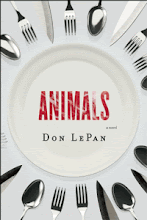After simmering for decades, the dispute over Canada’s agricultural policies and free trade has finally boiled over. All three major parties defend Canada’s supply management system for its supposed support of “food sovereignty” and the family farm. But the Conservatives are anxious at the same time to defend the principles of free trade and be part of any TPP pact. Those who argue against supply management say they are defending the interests of consumers who, it is presumed, think only of lower prices.
What no one defends in all this are the interests of the animals—the non-human animals who are at its centre. Where do the eggs and the dairy products come from? In some sense, of course, farmers are the producers—but in another, much more direct sense, milk and cheese and eggs are produced by cows and chickens. Every politician and every media report on “supply management” has been leaving out those who are doing the supplying—the animals.
It’s not hard to guess why that might be the case; as numerous undercover videos have revealed, the reality behind the closed doors of these industries is horrific maltreatment of animals. When Canadians drink milk and eat cheese and eggs they are, with very few exceptions, consuming the products of animal cruelty.
There is a better way. In the case of dairy products entering or leaving Canada, we could require that the cows be allowed to graze in fields rather than be constantly chained indoors in concrete “farms” (as is now the case). We could require that they not be bred to have udders so large as to cause them constant pain. We could eliminate the non-therapeutic use of antibiotics in agriculture. The list of best practices is long, but the underlying principle is simple: ensure that non-human animals are treated as they are in Switzerland, not as they are in Arkansas.
As it happens, what’s good for the cows and chickens is also good for us. A large body of research suggests that, while a vegan diet is healthiest of all, the next-healthiest is a diet in which any animal products consumed come from free-range birds, “happy cows,” and so on.
If our current protectionism is merely preserving artificially high prices in the interests of protecting a small number of wealthy farmers, it deserves to be scrapped. But what if the system were re-designed to protect high standards—of animal welfare and of human health? That could indeed justify higher prices.
Redesigning the system would not be easy. With limited jurisdiction over agriculture, the federal government might need to focus on standards for imported and exported dairy products and eggs; it would need to work with the provinces to raise the standards for all dairy and poultry farms. We would need a certification program to verify that cheese which crosses the border and is labelled as coming from “happy cows” really is just that. We would need measures to assist those who can now afford nothing but the cheapest, unhealthiest food. (A $15 minimum wage might be a good start.) But the difficulties involved pale beside the difficulty of, say, abolishing the Senate.
If we’d like clearer consciences about what we’re eating (and, at the same time, healthier and longer lives), it’s time to make that plain to the large political parties. (The Greens are already paying attention to these issues.)
What would be the impact of all this on trade? Cheap but not-very-healthy milk and eggs from Arkansas and Iowa would be prevented from entering Canada, but food from better American producers (better in every sense of the word) would be free to enter. In the other direction, better producers in Canada could tout their higher standards in their export initiatives. A “good for you—and good for them too” campaign could help Canadian producers build markets abroad as well as at home. In the United States, just as in Canada, more and more consumers care about how the food they eat is produced, not just how cheap it is.
Subscribe to:
Post Comments (Atom)





No comments:
Post a Comment
Comments welcome!